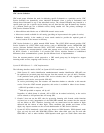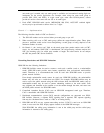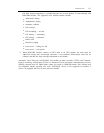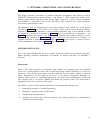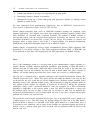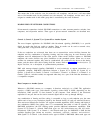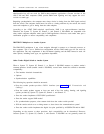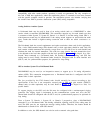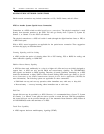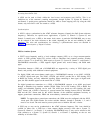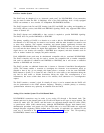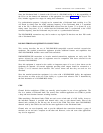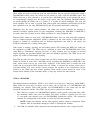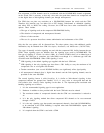
2-4
NETWORK CONNECTIONS AND CONFIGURATIONS
administrable but will not work for DMI-to-host-computer applications. Current versions of the
AT&T 3B5 and 3B15 computers (DMI) provide E&M trunk signaling and only support the wink-
in/wink-out trunk type.
Regarding synchronization, the computer must always derive its timing from the DMI signal received
from the switch. The computer should never be used as a timing reference by the switch; this would
cause each endpoint to get its timing from the other endpoint.
According to the AT&T DMI technical specification, DMI is an open-architecture interface.
Therefore, the System 75, System 85, Generic 1, and Generic 2 DS1s/DMIs are compatible with
other vendor computer endpoints when used in DMI applications. However, each vendor must pass a
certification program to ensure compatibility and compliance.
IBM
®
IDNX Multiplexer to Another System
The IBM IDNX multiplexer is not a host endpoint, although it connects to a front-end processor or
host computer. This is not a DMI-to-host configuration and the DMI trunk type will not work for
this application. The only requirement is that 24-channel signaling and the BOS format be used. All
other options, including trunk type, are application dependent.
Other Vendor Digital Switch to Another System
When a System 75, System 85, Generic 1, or Generic 2 DS1/DMI connects to another vendor's
customer-premises switch (another vendor’s DS1/DMI), several items should be verified to determine
compatibility:
●
The interface electrical characteristics
●
Options
●
Synchronization capabilities
The following key questions should be answered:
●
●
●
●
●
●
●
Does the vendor product provide a DSX-1 interface (see chapter 3, DS1 Transmission and
Cabling)?
Does the vendor product support at least one each of the line coding, framing, and signaling
options provided by System 75, System 85, Generic 1, and Generic 2?
Does the vendor implement AT&T ISDN specification?
Does the vendor support DMI modes?
For synchronization purposes, what stratum clock does the vendor switch provide?
Will the vendor switch act as a timing master or slave time to the communications system?
Does the vendor switch implement the digital loss plan specified by ANSI/EIA/TIA-464-A-1989?
Depending on the answers to these questions, basic compatibility can be determined. However,
because System 75, System 85, Generic 1, and Generic 2 DS1/DMI are not generally tested for



